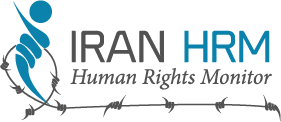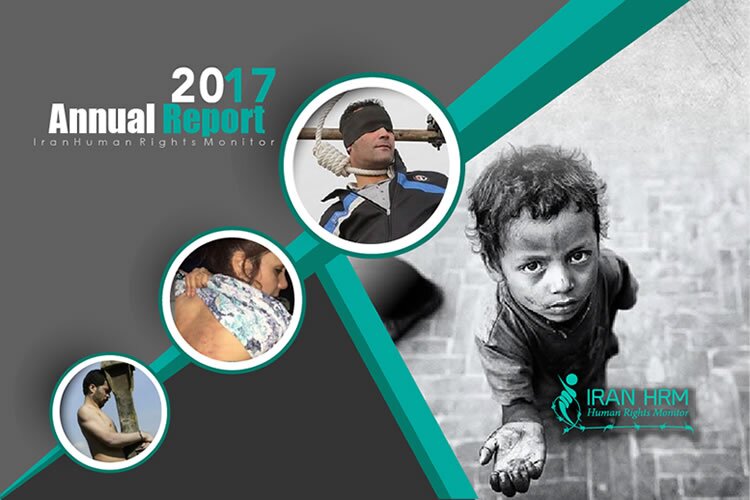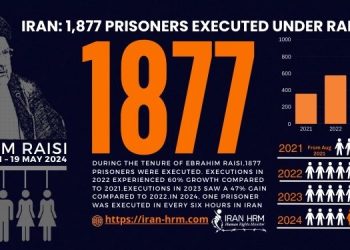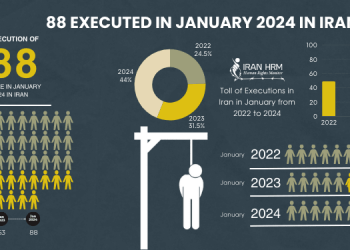A glance at the abysmal human rights situation in Iran
Iran Human Rights Monitor, Annual Report, December 2017
Introduction
Despite worldwide criticism of Iran’s human rights violations, the situation did not improve in 2017. Political activists, lawyers, journalists, students, women’s rights activists, and ethnic and religious minorities were widely targeted.
In her report on human rights in Iran in the first six months of 2017, UN Special Rapporteur on the human rights situation in Iran Asma Jahangir emphasized that Iran still faces grave human rights challenges, particularly that the judicial system is not independent. It needs to be reformed, she said if the situation is to improve.
In its 2016 – 2017 annual report, Amnesty International wrote that the governments of Iran, Saudi Arabia and Iraq remained among the world’s foremost executioners in the Middle East and North Africa, where the rate of executions is dreadfully high.
Following Khamenei’s remarks in June 2017 where he gave free rein to his forces to “fire-at-will”, repressive measures violating human rights were stepped up across the country. The 42% rise in the arbitrary killing of porters is an example.
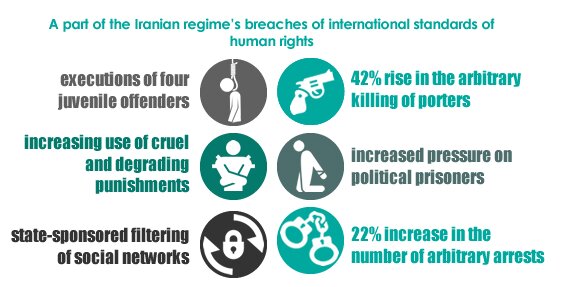
The aggravation of prison conditions, increased pressure on political prisoners, 22% increase in the number of arbitrary arrests, executions of four juvenile offenders, increasing use of cruel and degrading punishments, and the state-sponsored and extensive filtering of social networks are but part of the Iranian regime’s breaches of international standards of human rights.
The Iranian regime’s latest crime was seen in the deliberate negligence of earthquake victims in western Iran.
The magnitude 7.3 earthquake which has been the deadliest quake in the world this year, shook western Iran on Sunday November 12.
Instead of providing urgent relief to the victims, the clerical regime dispatched anti-riot forces and imposed a martial law in Sarpol-e Zahab, the epicenter of the earthquake.
In light previous experiences, people acted independently and rushed to the aid of the victims from all across the country. In many cases, however, the regime’s revolutionary guards and security forces prevented stopped the public’s aid, confiscated the trucks and took possession of the donations and goods under the excu se that it should be distributed through government agencies. Eyewitnesses reported that State Security forces and government agencies stole a considerable part of public’s aid.
se that it should be distributed through government agencies. Eyewitnesses reported that State Security forces and government agencies stole a considerable part of public’s aid.
The State Security Force arrested eight people for disclosing the situation of affected areas in western Iran and the regime’s inaction to assist the victims and provide relief.
Other reports indicated that Arzhang Zargoush, a journalist from a provincial weekly, was arrested by intelligence agents on 23 November 2017 for publishing a video clip on the state of affairs in Kermanshah Province after the earthquake and the authorities’ failure to provide relief to the village of Gavmish-Cheran (Buffalo Cowboy), a suburb of Gilan-e Gharb.
In the video, the journalist is heard as saying, “The authorities do not provide any services to the people. They are traitors and people want them to be overthrown.”
Publishing its annual report on the eve of the International Human Rights Day, December 10, Iran HRM to intends to attract the attention of all international human rights organizations to the gross violations of human rights in Iran and seeks their urgent and effective measures to help improve this abysmal situation.
A Glance at Civil and Political Rights
- The right to life
- Execution
According to statistics registered by Iran Human Rights Monitor, the Iranian authorities executed 520 people since the beginning of 2017.
115 of the executions during the 11 months were made public by the state media and 28 were carried out in public. 4 of those executed were under the age of 18 at the time of arrest, 10 were women and 4 were political prisoners.
The majority of executions were related to social crimes, of which 253 were based on drug related charges.
This is while the UN Secretary-General and Iran’s Special Rapporteur on Human Rights have repeatedly called on Iran to halt drug related executions.
The former UN secretary general, Ban Ki-moon, had given a damning assessment of human rights in Iran, highlighting the “alarming rate” of executions and saying executions for drug-related offences are often carried out after trials that did not meet international fair trial standards.
By ratifying both the International Covenant on Civil and Political Rights and the Convention on the Rights of the Child, Iran has committed itself to protecting and respecting children’s right to life as well as to outlaw the death penalty for all those under the age of 18.
In 2013, the Iranian regime amended its Islamic Penal Code, offering the possibility of retrials for juveniles sentenced to death. Later, Iran gave assurances in 2016 to the UN Committee on the Rights of the Child that this amendment would apply systematically for all juveniles who are currently on death row.
However, in 2017, Iran repeatedly violated its commitment.
Arman Bahr Asemani and Hassan Hassanzadeh were both juveniles at the time they allegedly committed the offence for which they were executed in early January 2017, in the cities of Tabriz and Kerman.
21-year-old Alireza Tajiki, was executed on August 10, 2017, in Adelabad Prison of Shiraz, southern Iran.
Alireza Tajiki was sentenced to death after a trial that failed to meet international standards of fairness and transparency in April 2014. His case was highly flawed as he has been denied due process, including being denied access to a lawyer during the investigation period.
The trial was grossly unfair and relied primarily on “confessions” which Tajiki had said were extracted through torture, including severe beatings, floggings and suspension by the arms and feet.
Mehdi Bohlouli was to be executed on April 19 in Rajaii Shahr Prison of Karaj. He was transferred to solitary confinement to be prepared for execution which was later postponed.
Mohammad Reza Haddad is also on death row for a crime he allegedly committed while he was only 15-year-old. The Iranian authorities have repeatedly rejected haddad family’s appeal.
Some shocking cases of execution in 2017 are as follows:
Mohammad Nabi Alizehi was executed on March 10 after he endured 24 hours under torture.
Sunni prisoner of conscience, Seyyed Jamal Musavi was hanged at dawn on Wednesday, August 23, in Rajaii Shahr Prison of Karaj.
The State Security Forces took the prisoner to solitary confinement under the pretext of taking him to hospital on August 16. He had been handcuffed and shackled for eight days, an inhumane measure which cut his hand and feet led to bleeding.
Adding to death row prisoners’ torment, the Iranian officials impose pressure and mental tortures on them.
Authorities in Zahedan executed 30-year-old Abdulkarim Shahnavazi and placed a noose on another prisoner. After witnessing Shahnavazi’s death, the latter was brought down from the gallows and told his execution will be carried in 40 days.
A 24-year old man identified as Shahin Parsajou and another inmate were hanged on September 19 in Ardabil Central Prison while they were handcuffed and shackled.
An audience of 50 fellow inmates was assembled to witness the execution
- Arbitrary murders
Iran Human Rights Monitor recorded 119 arbitrary murders. This include 84 poor porters who were shot and killed by the Iran’s Border Guards and the SSF.
27 persons were directly shot by the SSF and 8 others were killed by other means.
On August 12, a fruit peddler identified as Mozaffar Abbasi, was arbitrarily murdered by the municipality agents as he was beaten and his head hit the ground, a report said.
The State Security Forces targeted and shot a Kurd porter On August 20. He was identified as 17-year-old Vahid Dolatkhah Janikanlo. According to an informed source, he was severely wounded and died at the hospital from the severity of his wounds.
A young Sunni missionary identified as Hafez Safiallah was shot dead on August 19, 2017, by the State Security Forces in Saravan, in the south-eastern province of Sistan and Balouchestan.
A 46-year-old man identified as Asghar Nahvipour was shot and killed on July 20, when an officer opened fire at point-blank range. The victim was shot in Iran’s Shahr-e-rey metro station, south of Tehran.
On September 23, the SSF targeted an 18-year-old boy and killed him in Aabadan, southwest of Iran.
The SSF shot a young Baluch man to death on September 24 in Khash, a city in southeastern Sistan and Baluchestan Province.
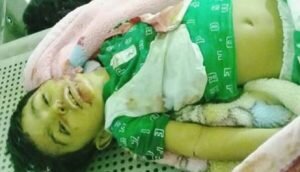
A three-year-old and his father were killed on September 28, during chase in the southeastern city of Iranshahr. The State-Security Forces raided a home where several men suspected of smuggling refugees and fuel between Iran and Afghanistan were hiding, killing one suspect, as well as a boy and his father who were caught in the line of fire.
The SSF Border Guards, on November 6, 2017, tortured a 13-year-old porter to death in a village in Khoy, East Azerbaijan Province. The teen porter identified as Rasoul Yousefi was arrested for carrying 20 liters of gasoline.
- Deaths in custody
Iran Human Rights Monitor registered 47 deaths in custody. 25 of those lost their lives due to lack of medical care in Iran’s prisons and 22 others took their own lives as a result of enduring tortures and other ill treatments.
On January 18, a female prisoner identified as Shiva Fekri lost her life due to high blood pressure in Qarchak Prison of Varamin, west of Tehran. She had been denied the necessary treatment.
A 22-year-old prisoner identified as Isa Barahouii committed suicide in late September to end his suffering caused by ongoing torture in prison of Zahedan, southeastern Iran.
A prisoner identified as 43-year-old Hussein Aflatouni, who was detained in the Greater Tehran Prison died as a result of not getting necessary medical attention. The prisoner, who suffered from diabetes, had lost his eyesight. Prison officials did not take any measures to address his condition which led to his deteriorating health and he eventually came down with tuberculosis.
- Prison condition and treatment of prisoners
- Prisons
Credible reports obtained by Iran Human Rights Monitor, point to inhumane and unsanitary conditions at Iran’s prison. Chronic overcrowding, starvation, severely limited hot water, poor ventilation, denial of access to medical care, lack of adequate facilities and degrading treatment are among the most common complaints.
According to some former prisoners, the main problem at Iran’s prisons is not the facilities, but human rights abuses such as solitary confinement, harsh interrogation tactics, and the denial of phone calls, family visits and access to their lawyers.
This report refers to the appalling condition of some prisons.
- Central Prison of Karaj
Central Prison of Karaj located in west of Tehran, is one of the dirtiest and overcrowding prisons in Iran which itself houses more than 8000 prisoners.
In a 20 square meters’ rooms between 40 and 50 prisoners are kept. Inmates are compelled to sleep on corridors floors and staircases due to massive overcrowding which has created extremely unsanitary conditions and other problems.
- Juvenile ward of Zahedan Central Prison
According to reports from Zahedan Prison, condition in Section 2 which is housing juvenile offenders, is dire.
This ward’s facilities are designed to hold just 205 prisoners while it is housing more than 220 juveniles.
Overcrowding in this facility has caused many health problems, limiting the inmates access to adequate hygienic condition.
from the nine restrooms, at least five are out of order. The water cooler has been out of order for at least two months. The two Air conditioners in the prayer room are both broken. There are only three air conditioners in this section, all of which are broken. Also according to reports, from the eight telephone booths, two are out of order. Prison officials have told the prisoners’ families that they should raise money for the maintenance.
- Zabol Central Prison
According to reports, Zabol Central Prison in Sistan and Baluchestan Province (Southeastern Iran) is lacking the most basic sanitary living requirements. Located 2000 km away from central Iran, Zabol Central Prison is one of the most remote and perhaps the most forgotten prison in Iran in which the prisoners have been brutally piled up on one another. While Zabol with its continuous dust is suffering from air pollution, the prisoners held in the Central Prison of the city, are deprived of even healthy drinking water. In the meantime, new sanitary and drug problems, malnutrition and other basic requirements are harming the prisoners as well.
- Mahabad Prison
Mahabad prison has 6 wards. Ward 1 is located on the level floor and is assigned to prisoners charged with drug-related felonies. This ward has 4 rooms and one hall, with separate showers, restrooms and a court yard. Most of the times there are 120 to 140 prisoners held in this ward.
Wards 2, 3, 4, 5, the mosque and the prison store are located on the second floor. Wards 2 and 3 each have 4 rooms and a hall. Ward 4 is allocated to the youth and is actually a large hall where nearly 90 people are imprisoned. Ward 5 is allocated to ill prisoners and there are 30 individuals held there.
- Women ward of Urmia Central Prison
The Women’s Ward in Urmia Central prison has a large hall compartmentally divided into eight rooms. Each room often has 16 beds for 30 prisoners, half of whom sleep on the floor of the rooms or in the corridors because the rooms do not have enough rooms. Around 200 prisoners are jailed in this ward. There are only five toilets for all these prisoners and two of them are completely dysfunctional. One of the biggest problems in this ward is a lack of access to necessary medical facilities and the have only been permitted access to the medical clinic once a month. It is noteworthy that Urmia Central Prison is the third largest prison in Iran.
- Ardabil Prison
Ardebil Prison authorities have turned Section 7, which is where political prisoners are detained, into a cage with fences. The holes in this fence are 4 cm squares and have covered the whole enclosure. The purpose is to limit and exacerbate the pressure on political prisoners. This section has a courtyard measuring 6 in 7 meters which is very small. Above the courtyard is a very tall and wide-angled 12-meter observation tower. The turret tower has a large cylindrical shape that prevents the sunshine from reaching the prisoners in the yard.
- Human rights activists and prisoners
A total of at least 640.000 people are estimated to be imprisoned across the country. However, the figures published by the state should be considered as minimum with the actual figures being considerably higher. Disappointingly, the Iranian refuses to provide any information about the number of political prisoners.
Prisoners are routinely subjected to torture and ill-treatment. More than 85 methods of physical torture and more than 109 methods of psychological torture in prisons have been reported by Iran Human Rights Monitor in 2017.
While International laws allow using tools such as fetters and handcuffs only for the prisoners who might harm themselves or attack others and try to escape, chaining prisoners to iron bars or poles with handcuff and shackles is common practice in Iran. In many cases prisoners were chained to a pole in quarantine sections or prison yards even for days in cold winter or hot summer.
Afshin Valipour, Behnam Amiri, Meysam Saber, Keyvan Mokhtari, Afshin Zeinaly, Abbas Alipour and Mohammad Saber Malek Reisi are among the prisoners who were subjected to such torture during 2017.
Holding political prisoners with dangerous inmates, denying family visits or telephone calls, denying prisoners access to medical treatment, refusing to provide any medical care in prison clinics, beating prisoners, pulling off fingernails and mock executions are among the most common tortures.
More than 60 prisoners have been beaten up after they protested to poor prison conditions.
Hamed Dehghan was distressed due to horrible prison conditions. When he referred to prison clinic to receive medical treatment, but prison authorities refused to provide him any care. Instead he was transferred to solitary confinement and was placed under torture.
Bahman Ghaderpour, Yaghoub Noureh, Abdolghur Asura, Kazem, Kamal Ali Moghaddam, Hazhar Gharoghi, Behzad, Mansour Choupani, Abdolkhalegh Mohammadzadeh, Ebrahim Gholami, Abdollah Jam, Yousef Ghaderpour and five others were beaten up to end their hunger strike.
More than 15 inmates were subjected to torture by prison officials and agents with various torture tools.
Five Baluch citizens were subjected to torture to make forced confessions. These men who were arrested by the Ministry of Intelligence in Iranshahr on July 8, have been identified as Mohammad Saleh Shahdad Zehi, Mahmoud Shahli Bar, Idris Rokni, Abdolaziz Rokni and Hashem Zardukouhi. According to an informed source, they were arrested after a Bassij agent (the regime’s paramilitary force) was killed in the town of Sarbaz. According to reports obtained by Iran Human Rights Monitor, three fingernails of Idris were pulled off.
Thirty-six-year-old prisoner Moslem Shiry, who is detained in the Central Ardabil Prison, was under torture and constant pressure by the head of the internal ward Farhad Nowruzi. On September 18, Norouzi transferred him to the external quarantine section and flogged him. The head of the ward has repeatedly told the prisoner that his punishment was not to die by the gallows but that he would kill him slowly and that his voice would not reach anyone.
At least 10 political prisoners were transferred to communal wards where they had been beaten up by dangerous prisoners.
Majid Moghaddam, Rasoul Hardani, Kamran Sheikheh, Khosro Besharat, Anvar Khezri, Ramin Rouzian and Siamak Ashrafi were beaten up by other prisoners who had been incited by prison officials. They were subsequently transferred to solitary confinement.
At least 68 prisoners need medical treatment and sick leave, but prison officials refuse to provide them any care. Some prisoners lost their lives due to being denied adequate medical access.
Hunger striking political prisoners in ward 10 of Rajaii Shahr Prison were denied access medical care. prison doctors are allowed to offer them care; they are deprived of referring to prison clinic. Many of them are in critical health conditions.
Prisoners have to go on hunger strike to have their rights recognized. Iran Human Rights Monitor have recorded 174 instances of hunger strikes inside prisons across the country. This include 4 mass hunger strikes and 3 dry hunger strikes. A prisoner sewed his lips shut besides his hunger strike.
18 political prisoners detained in Rajaii Shahr Prison went on a 40-day hunger strike since July 30, to protest harsh treatment by prison authorities.

Mohammad Nazari who has been detained for 24 years without any furlough went on a 99-day hunger strike since the same day, protesting his uncertain condition in prison.
An inmate identified as Mehdi Keshavarz sewed his own mouth shut to protest issuing excessive bail which he cannot afford. The hunger striking political prisoner was transferred to solitary confinement on July 19, 2017 by order of prosecutor in Borujerd Prison, west of Iran.
A prisoner identified as Ahmad Irani also sewed his lips shut on June 25, protesting to pressures imposed on him in Dizel Abad Prison of Kermanshah, northwest of Iran.
- Retaliatory measures against prisoners and human rights activists
Since January to November 2017, various instants of retaliatory measures against political prisoners have been reported. Here are some of these measures.
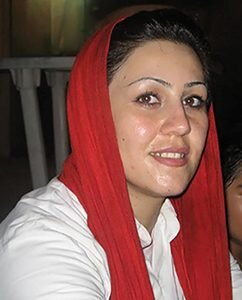 Maryam Akbari Monfared has been seeking an official investigation into the 1988 execution of thousands of prisoners, including her siblings in Iran while they were serving their sentences. She filed a formal complaint in October 2016 with the prosecutor’s office. To date, the authorities have not processed the complaint. Taking reprisal for her speaking out against the 1988 massacre was threatened with an additional three-year prison term and exile to a remote prison. She has currently been denied medical access.
Maryam Akbari Monfared has been seeking an official investigation into the 1988 execution of thousands of prisoners, including her siblings in Iran while they were serving their sentences. She filed a formal complaint in October 2016 with the prosecutor’s office. To date, the authorities have not processed the complaint. Taking reprisal for her speaking out against the 1988 massacre was threatened with an additional three-year prison term and exile to a remote prison. She has currently been denied medical access.
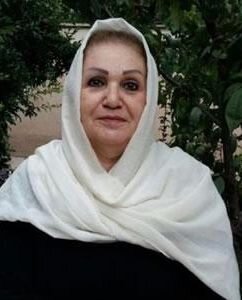 Iranian human rights activist Raheleh Rahmipour was arrested on September 10 at her residence in Tehran. Raheleh Rahemipour has spent years trying to uncover the truth about what happened to her brother and baby niece who were forcibly disappeared while in custody during the early 1980s. She was sentenced to a year in prison earlier this year in connection with these efforts and has been awaiting the outcome of her appeal.She is still held under interrogation in Evin Prison without providing any explanation on the reasons for her detention.
Iranian human rights activist Raheleh Rahmipour was arrested on September 10 at her residence in Tehran. Raheleh Rahemipour has spent years trying to uncover the truth about what happened to her brother and baby niece who were forcibly disappeared while in custody during the early 1980s. She was sentenced to a year in prison earlier this year in connection with these efforts and has been awaiting the outcome of her appeal.She is still held under interrogation in Evin Prison without providing any explanation on the reasons for her detention.
Mass hunger strike in Rajaii Shahr Prison of Karaj, provoked a wave of international criticism at Iran’s human rights violations, especially in its prisons. In an act of retaliatory, Mardani, the warden of Rajaii Shahr Prison, launched new fabricated cases against 11 of the hunger strikers. Saeid Masouri, Reza Akbari Monfared, Abolghasem Fouladvand, Amir Ghaziani, Shahin Eghdami, Ebrahim Firouzi, Hassan Sadeghi, Saeid Shirzad, Shahin Zoghitabar, Payam Shakiba and Majid Asadi are facing additional criminal charges and a further prison sentence. Meanwhile, after months of uncertainty Majid Asadi, Payam Shakiba and Mohammad Banazadeh Amirkhizi, who were rearrested last year, have been sentenced to overall 28 years’ imprisonment by the Tehran Revolutionary Court.
Majid Asadi was sentenced to 6 yearsbehind bars plus two years living in exile in city of Borazjan, in Bushehr province, south of Iran, while both Mohammad Amirkhizi and Payam Shakiba were each sentenced to 11 years of prison.
Majid Asadi and Mohammad Amirkhizi were also sentenced to two years of forced residence in the towns of Borazjan in Bushehr Province and Nick Shahr in Sistan and Baluchistan Province, respectively.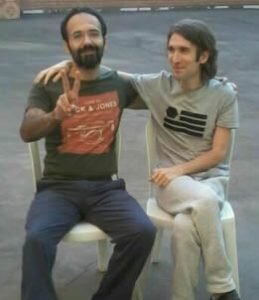
After images of political prisoners Arash Sadeghi, Sohail Arabi and Ismail Abdi in Evin Prison’s Section 350 courtyard were published, this section was closed and its prisoners were transferred to other sections.
According to reports, because of these images were published, prison guards stormed this section and after confiscating cellphones, transferred Soheil Arabi to Section 8 and banished Arash Sadeghi to Rajaie Shahr Prison.
Political prisoner was set to be released in April 2015 before authorities launched a new fabricated case against him. As a result, he was sentenced to a year in prison in absentia by branch 15 of the revolutionary court. With the completion of the further prison sentence Mr. Moezzi, was set to be released again in July, but he has currently been transferred to another prison and has placed under pressure.
- Inhuman sentences and cruel punishments
In 2017 many inhuman sentences and cruel punishments have been issued and carried out including hand amputations and floggings. Reports obtained by Iran Human Rights Monitor indicate that since the beginning of 2017, 5 hand amputation sentences and 32 floggings were carried out across the country.
At least 105 persons paraded through Iran’s streets as humiliation punishments. It was among the most common punishments carried out by Iranian authorities in 2017.
UN Secretary-General and Special Rapporteur on Iran’s Human Rights situation have repeatedly criticized Iran for implementing such degrading punishments, floggings, amputations and other cruel punishments continued to be applied.
- Amputation
- A prisoner was executed in the Shiraz prison on April 8. The prison authorities had amputated his hand ten days prior to the execution in the same place.
- Prison authorities amputated the fingers of a young man in Tehran on June 15
- The Iranian regime’s deputy prosecutor in the city of Qom, announced in September 21, that the hands of three person accused of theft were amputated and at the same time four others accused of drug related crimes were executed in Qom central prison.
- Iranian attorney general in the Khorasan Razavi Province, Gholam Ali Sadeghi, announced the hand-amputation of a person charged with theft on October 14.
- Flogging
- A journalist received 40 lashes on January 6, for inaccurate reporting.
- Hassan Rastegari Majd, detained in Urmia Prison was flogged on June 1st, for disturbing prison order.
- Qazvin’s prosecutor announced on June 10, that at least 20 people were flogged after being caught eating or drinking in public during fasting hours.
- lashing sentence for a female prisoner identified as Tahmineh Danesh was carried out on June 13, in prison in three consecutive sessions.
- Malayer Prosecutor announced the public flogging of a 30year old man on July 3.
- Seven men were flogged in public in Quchan on July 7.
- The order of 80 lashes was carried out on September 19, 2017, for Leila Bayat who had sought refuge in Norway but had been deported and sent back to Iran in March 2017.
- The Jiroft Deputy Police Chief said that the lashing sentence for three robbers was carried out in public in the town of Jiroft on November 1.
- A man accused of stealing in one of the villages in the northern town of Talesh was lashed in public on November 23.
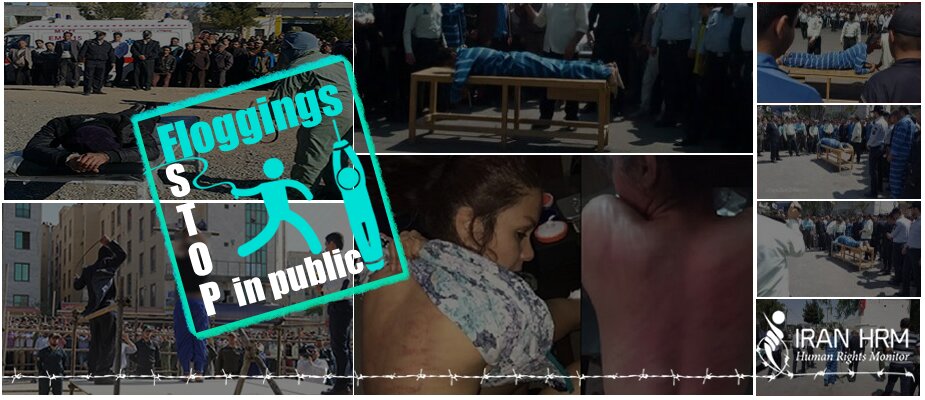
- Public humiliating parade through the streets
- Iranian State Security Forces on January 15, paraded a man through the streets of Kamal Shahr in Karaj, west of Tehran.
- The commander of the SSF announced on January 16 that a man was paraded through the streets of Iranshahr, southeastern Iran.
- The SSF agents publicly humiliated 80 youth arrested during a peaceful annual event celebrating fire festival and the Persian calendar new year.
- Iranian police on April 21, paraded three young men through the streets of Dehloran in Ilam Province, western Iran, after they were accused of “mischief.”
- Security forces paraded a young man on May 31, in the streets of Marivan, Iranian Kurdistan, while covering his head with a women’s shawl.
- A young man was paraded through the streets of Torbat Jam, on June 18.
- In the month of July, eight people through the streets of Pakdasht, three people in the streets of Qazvin and a number of people in Tehran were paraded through the streets.
- The Iranian regime’s security forces in Tehran on July 24 shackled and paraded youths as a form of punishment aimed at breaking their characters and spreading fear in society.
- The SSF in Sanandaj, capital of the Iranian Kurdistan paraded a young man on September 2017.
- The Asfarayan Chief of Police announced the arrest of a convict in this town located in Khorasan Province and said that he was paraded in this town on October 14.
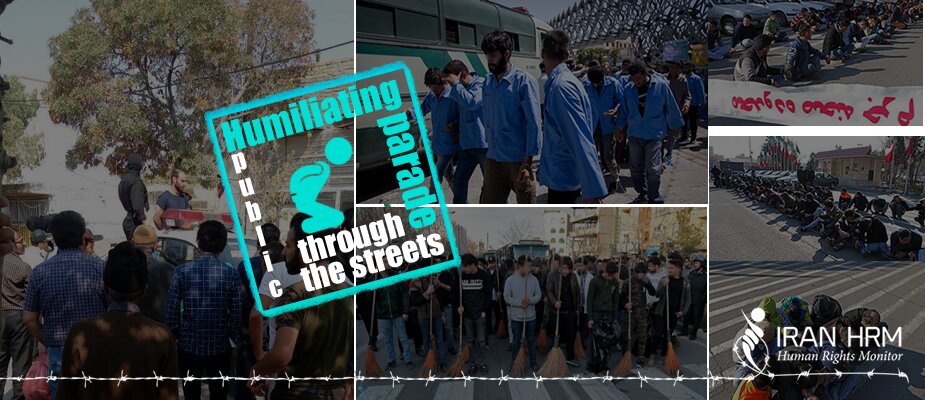
- Arrests
Iran Human Rights Monitor has registered 13842 arrests across the country, including 9511 social arrests, 1251 politically motivated arrests, 643 arrests on religious grounds and 2437 arbitrary arrests.

- Religious and ethnic minorities
For many years, Iran has been one of the world’s record holders of violation of the rights of ethnic and religious minorities. There are widespread abuses against members of recognized and unrecognized religious and ethnic minorities such as Arabs, Azeris, Baloch, Kurds, Namatullahi Sufi Muslims, Sunnis, Baha’is, and Christians.
Asma Jahangir, the UN special rapporteur on human rights in Iran has repeatedly reiterated on the widespread discrimination against religion and ethnic minorities.
- Christians
Christians face prolonged prison terms, heavy sentences, and exile, and are deprived of practicing their religious rituals in their churches.
At least 21 sentences have been issued against the Christian missionaries. 10 Christians are imprisoned. Many of Christian converts have been arrested and faced hefty prison sentences for their faith. Some are sent to exile to remote regions after termination of their prison sentences.
Christian convert Ebrahim Firouzi has been sentenced to five years behind bars for his religious believes.
Ms. Anousheh Rezabakhsh and her son were arrested on February 20, 2017, and taken to a detention center in Urmia.
Iranian officials refrained from registering jailed Christian priest Youssef Nadarkhani’s child at school. In addition to 10 years in prison, this Christian priest has been sentenced to two years of exile to Nikshahr, a town in the Province of Sistan-Baluchistan.
On October 10, security forces arrested Mohammad Ali Torabi, a 39-year-old Christian from Khuzestan Province, at his place of work in Dezful. The agents took him to his home and after finding a number of Bibles and Christian pamphlets, transferred him to an unknown location.
Abdul Ali Pourmand, 38, known as Elias, who was a deacon at a home church in this town called the “Payame Aramesh Church,” was arrested by security forces on October 19, and was transferred to Ahwaz.
- Baha’is
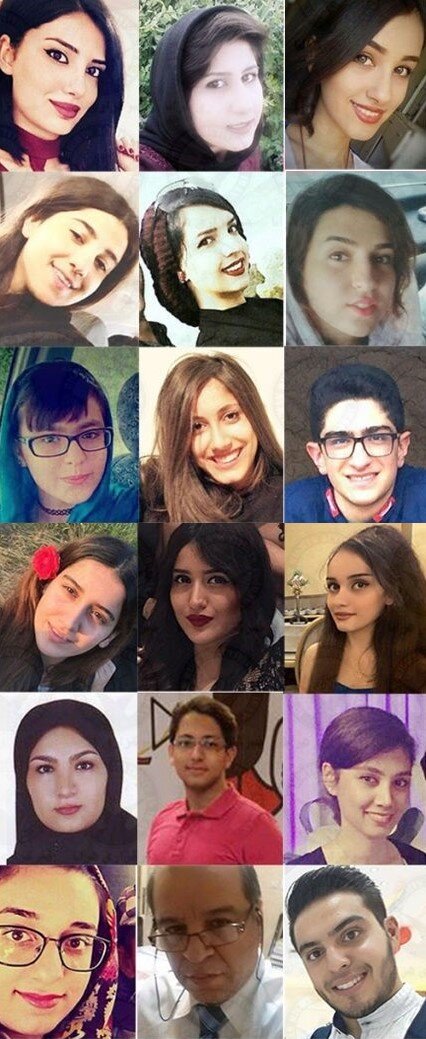
Iran’s largest non-Muslim religious minority, the Baha’i, has historically been discriminated against and continues to be denied jobs and educational opportunities, and face arbitrary detention and unfair trials.
According to the Baha’i International Community, since 2005, at least 860 Baha’is have been remanded and around 275 have been imprisoned.
Just days after President Hassan Rouhani declared on September 22 that religious minorities in the Islamic Republic have the same rights as Shiite Muslims, at least 120 Baha’i citizens who participated in the 2017 General University Admission Test were denied entry to university due to their religion.
After entering their name and volunteer number (in the affiliated website), the young men and women encountered a message which read, “Dear volunteer, refer to the Education Accountability Organization due to a violation in your case”.
At least 30 people have been denied higher education and expelled from their universities due to their religious believes.
According to the third article of the resolution approved in 1991 by the Supreme Council of the Cultural Revolution, which was approved by Khamenei, “at universities, both at the entrance and during education, if it is established that they are Baha’is they are to be deprived of education.”
One of the common tools the Islamic Republic authorities use is harassing Baha’is and closing up their shops and businesses without any warning or justification.
This year, at least 96 Baha’i-owned business were shut down by the Iranian authorities.
- Economic, social and cultural rights
- Laborers
For many years, Iran has been the world’s record holder of deadly accidents in the work place.
Figures provided by the Iranian regime on the number of victims of accidents in the work place indicate that laborers are always in danger of fatal accidents.
Many Iranian workers do not enjoy of any insurances and benefits. The workers who injured due to workplace accidents are no longer able to earn money, which devastates their families as the Regime does not provide financial support to them and denies them access to things like accidental death and critical injury insurance.
Iranian authorities have refused to release the actual workplace casualty figures, but even the level of officially reported accidents presents a shocking problem.
Based on official statistics, every year, 15,000 workers are afflicted in accidents at the work place. That is a daily average of more than 41 accidents with five to six workers losing their lives.
At least 2,000 workers lost their lives in accidents at the work place last year. 1,200 or 60% of them were construction workers.
Iranian workers also face nonpayment of their wages and mass layoffs. Their employers, of whom many are government entities or private manufacturers closely affiliated with the state, hold back paychecks, as well as lay off employees without relief packages. Iran has no feasible social security plan to assist the newly unemployed workers.
During 2017, labor protests and strikes have increased across the country. Workers are demonstrating against layoffs and nonpayment of wages. Iranian regime however, have attempted to halt protests by arresting workers and sentencing them to prison.
One example is the Iranian trade unionist Reza Shahabi, who is curently held in section 10 of Raja’i Shahr prison. He has been sentenced to six years behind bars on charges of “gathering and colluding against state security” and “spreading propaganda against the system” for his peaceful trade union activities.
In yet another case, the Haft Tapeh Sugar Cane Factory Syndicate announced in July that 15 of its workers had been arrested by security forces, and demanded their immediate release. According to this announcement, after worker protests, security forces attacked the workers’ homes during the night and arrested them.
- Child laborers
The number of child laborers is on the rise according to the state-run news agencies in Iran. Some 10 million people are absolutely poor and this contributes to the daily rise in the number of child laborers. The same reports indicate that 60 per cent of the people of Iran have incomes less than the minimum a family needs to respond to the needs of their children. This is while Iran is one of the world’s richest countries with natural resources such as oil.
Iranian officials have estimated that there are 7 million child laborers and street children in Iran. 3.2 million children have drop
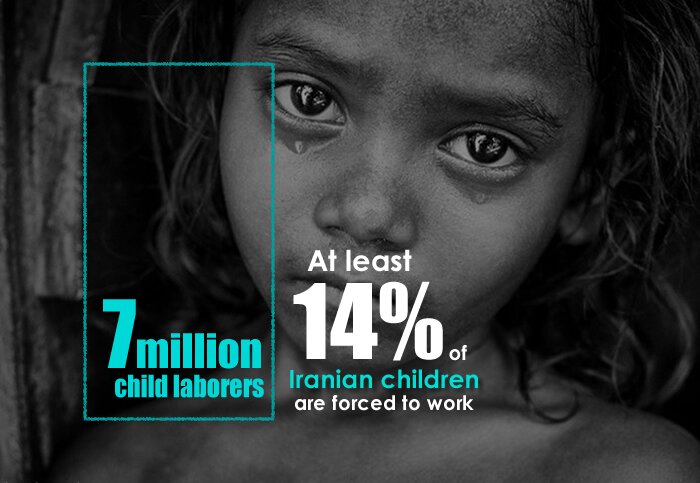
ped out of school. Officials have told state-run news agencies and websites about a considerable number of children being abused for drug trafficking and sex. Nahid Tajeddin, a deputy from Isfahan, says, “Some urban economic experts put the number of child laborers in Iran between 3 and 7 million, while this figure has been estimated to be 20,000 for Tehran. Since most of these children do not have any registered IDs, there are no accurate statistics in this regard.” (The state-run Tasnim news agency, September 27, 2017)
The National Welfare Organization is obliged to make efforts to expand empowerment, support and rehabilitation services and help provide for the basic needs of low income social sectors. However, the NWO has turned into a suppressive institute for cracking down on low income families and especially child laborers.
The Welfare Organization, Tehran’s Municipality, and 11 other organs including the State Security Force and the Police, launched a plan on September 6, 2017, to apprehend child laborers. In this plan, the SSF used 16 vans to round up more than 300 child laborers in several days. The Afghan kids were taken to a camp in Varamin. Iranian teenagers were taken to the Yasser Center, and younger children were taken to a center by the name of Bessat. (The state-run ISNA news agency, September 17, 2017)
Hossein Assadbeigi, head of the Social Emergency of the National Welfare Organization, remarked on the number of children harassed between March and August 2017. He said, “In this period, 1193 cases have been registered by Intervention Centers, 8525 people have contacted the 123 hotline, and 672 cases have been registered by the mobile services department.” (The state-run Tasnim news agency, November 8, 2017)
Reza Ghadimi, Executive Director of the Social Services Organization of Tehran’s Municipality, defended the plan to round up child laborers and said, “Welfare Centers might not have sufficient facilities, but they are a better place than the street corners particularly in the cold season, and especially that 90% of the children are sexually abused.” (The state-run ILNA news agency – October 14, 2017)
- Conclusion
Iran HRM urges all international human rights organizations to intervene to end the systematic violations of human rights in Iran.
To this end, it is imperative that the U.N. Special Rapporteur on the situation of human rights in Iran be allowed to visit Iran and have free access to all prisons and other places of interest across the country.
The Iran HRM further demands halt to all executions in Iran.
All political prisoners and prisoners of conscience must be released.
All forms of torture and inhuman punishments, including flogging and limb amputations, must be stopped.
All ethnic, religious and gender discriminations, arbitrary arrests, harassment and repression of women, censorship, eavesdropping, and filtering of the cyber space must be stopped.
Freedom of expression, religion and belief, press and assembly, must be upheld as every citizen’s basic rights.
All defendants must have access to fair and public trials.
